At the Frankfurt Motor Show in September 1973, Porsche unveiled a special 911 concept car that changed the course of sports car history. With RSR fender flares, a large rear wing and the word “Turbo” emblazoned over the rear haunches, the new Porsche offered an exciting new glimpse at the future of the 911 series.
A month later, Porsche announced that they would cease factory-backed racing activities for 1974, allowing private entrants to represent the marque with the Group 4 RSR. However, in cooperation with Martini & Rossi, Porsche entered a turbocharged Carrera in the Group 5 category for the Manufacturer’s Championship, just as had been done with the prototype RSR 3.0 models of 1973.
At the time of the announcement, Porsche had little more than a concept for a turbocharged racing Carrera, yet the idea was appealing for several reasons. Not only would a Turbo Carrera expand on the technical expertise gained during the final years of the 917 program, it would set the stage for the production Porsche Turbo that was being developed for the 1975 model year. Furthermore, the promise of a “silhouette formula” in the near future made a Group 5 Turbo Carrera an ideal platform for experimentation.
Over the winter of 1973–1974, Porsche began work on their latest racing 911 using a standard RSR as the foundation.
To comply with the Group 5 regulations that limited capacity to three litres, a 2.14-liter engine was developed with a magnesium alloy crankcase, polished-titanium connecting rods, enlarged oil-pumps, dual ignition, Bosch mechanical injection and sodium-cooled valves. At the rear of the engine, a single KKK turbocharger was mounted in the manner of the 917 Can-Am cars. This potent engine was mated to the five-speed RSR transaxle with an 80% locking differential and special half-shafts for increased strength.
Like the engine, the chassis was a vast departure from the production 911 and Porsche implemented the best RSR and 917 components. The standard torsion bar suspension was replaced with progressive-rate titanium coil springs, Bilstein shock absorbers, anti-roll bars and boxed-aluminum trailing arms. The result was a suspension assembly 66 lbs. lighter than those of the RSR 3.0. To this sturdy foundation, Porsche equipped the Turbo Carrera with RSR-type brakes and massive rear wheels for additional grip.
Again, using the RSR as the basic foundation, the bodywork made extensive use of fiberglass, with lightweight plastic forming the front fenders, rear aprons and all door and deck lids. Similarly, the interior was stripped of all unnecessary details and outfitted with an aluminum roll cage, boost gauge, boost knob and full-race controls. At the rear, a substantial rear wing was fashioned to both increase downforce and provide a more discreet inlet for the intercooler. In an attempt to maintain a visual relationship with the production 911 , the large rear wing was painted black to downplay its size.
After extensive testing, the RSR Turbo 2.14 made its competition debut at the Monza 1000 Kilometers finishing 5th overall and proved extremely successful at the 1974 24 Hours of Le Mans finishing 2nd overall behind a Matra sports prototype. Throughout the 1974 season, the Turbo Carrera continued to be tested and improved, eventually leading to the introduction of the 935 in 1976.
Presented here is the second of the four Carrera RSR Turbo 2.14s purpose built for the 1974 Group 5 Championship. Constructed at the development center in Weissach during the Winter months of 1973–1974, chassis 911 460 9016 was given the internal designation R9.
According to letters from the Porsche factory, R9 was “handmade in long duration” and used for testing and development in January 1974 at the Paul Ricard Circuit in the South of France.
Following substantial revisions at Weissach, R9 and another RSR Carrera Turbo premiered as factory entries at the Le Mans trials beginning on March 23, 1974. Finished in the classic Martini & Rossi livery – silver metallic striped in red and blue – R9 wore race number 1 and was driven by works drivers Gijs van Lennep and Herbert Müller.
Although the new cars experienced the expected difficulties, Helmuth Koinigg’s Turbo Carrera turned a lap time of three minutes and 55 seconds – 11 seconds faster than the best lap recorded by an RSR 3.0 the previous year. During the Le Mans four-hour race – run in two separate heats – Lennep and Müller showed great promise driving R9, although the car failed to finish either heat. In race one, the Porsche ran out of gas on the final lap and, in race two, the
turbocharger gave up.
Following the Le Mans tests, Porsche made the intercooler part of the Turbo Carrera’s standard equipment and revised the intake manifold to improve air distribution. In April and May, R9 served as a training car for the Monza 1000 Kilometers and Spa 1000 Kilometers before making its competition debut at the Nürburgring 1000 Kilometers on May 19th.
With Schurti and Koinigg at the wheel, R9 completed 30 laps and finished 7th overall while the sister car, driven by Lennep and Müller, finished 6th overall. Notably, the best result for a normally aspirated Carrera RSR was 12th overall.
After gearbox trouble prevented a finish at the Imola 1000 Kilometers, Lennep and Müller drove R9 to an impressive 6th place overall at the Österreichring 1000 Kilometers in Austria. A testament to the outright speed of the Turbo Carrera, only the Matra-Simca, Alfa Romeo and Gulf-Mirage sports racing prototypes finished ahead of R9.
At the end of the 1974 season, R9 was reconditioned at the Porsche factory and sold to Dr. William Jackson of Denver, Colorado, for 77,700 DM. A well-known and respected enthusiast, Dr. Jackson was one of the earliest and most discerning collectors of Porsche racing cars. Over the years, Dr. Jackson owned some of the most important examples of the marque, including 550 and RS Spyders, two America Roadsters, an Abarth Carrera, a 904 and a 911 R.
On August 25, 1975, Porsche corresponded with Denver collector Grady Clay regarding Dr. Jackson’s purchase of the Martini Turbo Carrera, acknowledging receipt of the 25,000 DM deposit. Significantly, the letter details the Turbo Carrera’s history and states that R9 covered 5,500 km throughout its various training and racing sessions.
In February 1976, Porsche issued the Importer’s and Manufacturer’s Statement of Origin and the former Martini Racing Team Porsche arrived at its new home in the US. For the next three decades, the RSR Turbo 2.14 remained a fixture in Dr. Jackson’s collection. Fortunately, the Porsche saw very little, if any, use during that period, thereby preserving the car in outstanding, as-delivered condition.
In October 1999, Dr. Jackson finally sold the works Porsche to classic car dealership Heritage Classics in Los Angeles, California. It wasn’t long before Matthew Drendel discovered the car’s whereabouts and, in Fall 2003, R9 found a new home in the Drendel Family Collection.
Over the past nine years, the RSR Turbo 2.14 has been selectively displayed in concours events – Rennsport Reunion and the 100 Motor Cars of Radnor Hunt – and was featured in Porsche’s “Family Tree” commercial, which was produced for the introduction of the Panamera.
Unlike the vast majority of racing sports cars, the Martini & Rossi works Porsche remains in exceptionally original, unrestored condition, essentially untouched in every significant way. Upon inspection, one finds traces of each and every modification made by the engineers at Weissach, fascinating evidence of experimentation. Whereas most 911-based racing cars were built to strict specifications, this car played a unique role, serving as Porsche’s test-bed while attempting to build the first turbocharged 911s.
Beyond its own special qualities, R9 is offered with a remarkable file that contains original letters and invoices from Porsche as well as the original Importer’s and Manufacturer’s Statement of Origin. Such important artifacts are rarely seen and support the unique history of this magnificent motor car.
If only for its status as one of, if not the very first purpose-built 911 Turbo, R9 is among the most historically and technologically significant Porsches in existence. It is the origin of one of the greatest racing programs in history and, as such, embodies the spirit of competition. Its marvelous unrestored state, impressive racing history, iconic Martini & Rossi livery and unquestioned provenance are qualities that place this car in an extremely rarified category of competition cars.
This 1974 Porsche RSR Carrera Turbo 2.14, chassis number 911 460 9016 (R9), sold for $3,245,000 at the 2012 Gooding and Company Amelia Island sale, held March 9th in Amelia Island, Florida.
Auction Editor Rick Carey reported on R9:
Lot # 55 1974 Porsche 911 Carrera RSR Turbo 2.14; S/N 9114609016(R9); Silver, Red, Blue ‘Martini’/Black; Estimate $1,750,000 – $2,250,000; Competition car, original as-raced, 3+ condition; Hammered Sold at $2,950,000 plus commission of 10.00%; Final Price $3,245,000 — 2142cc/450hp turbocharged SOHC flat six cylinder, 5-speed, fully independent and adjustable suspension with titanium coil springs, front splitter, huge rear wing, large fiberglass flares front and rear, 1-piece 5-spoke center lock wheels, Martini livery, aluminum roll cage. The second of four Carrera RSR Turbo 2.14s built. Used a works race and development car with several races including 6th overall at the Osterreichring 1000km in 1974 and then sold to Dr. William Jackson in Denver. Unrestored and as raced. Fiberglass is wavy, paint is chipped, interior and engine well patinated. Raw fiberglass cooling ducts yellowed and dirty in the best possible way. Drendel Family Collection. While an incredibly significant car, the RSR Turbo’s final price is huge considering other, equally potent and more successful Porsches were on offer for far less. The $700,000 premium this car commanded over the 76/935, for example, doesn’t add up.
[Source: Gooding & Company; photo credit: Pawel Litwinski courtesy of Gooding]


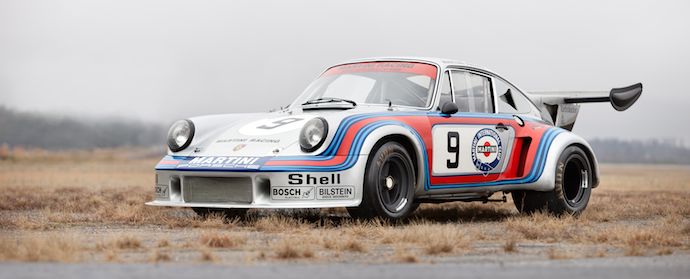
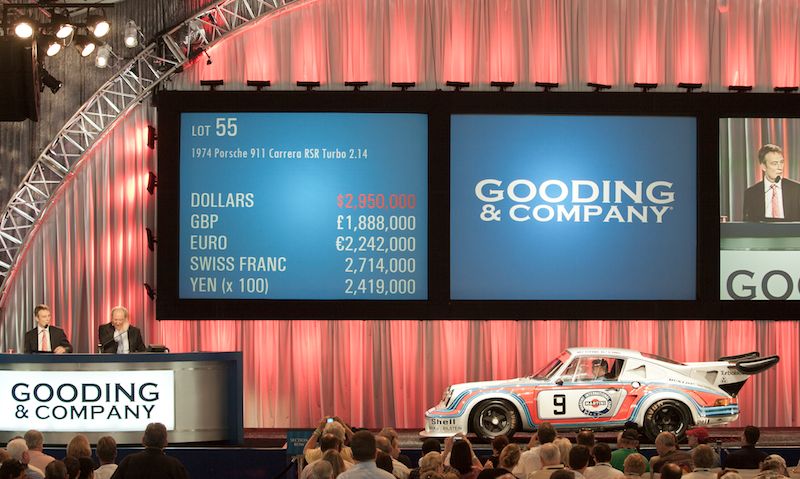
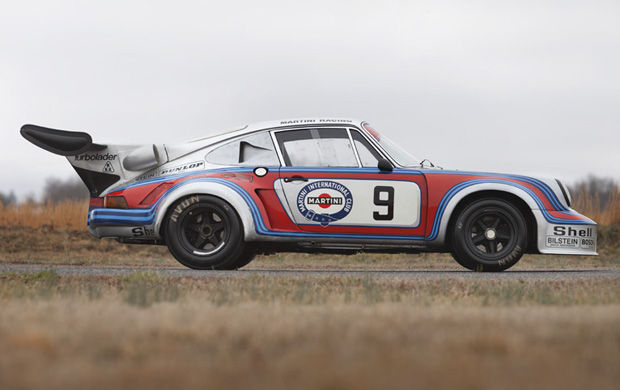
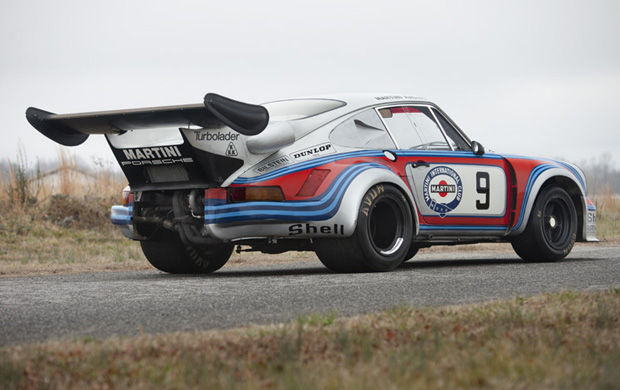
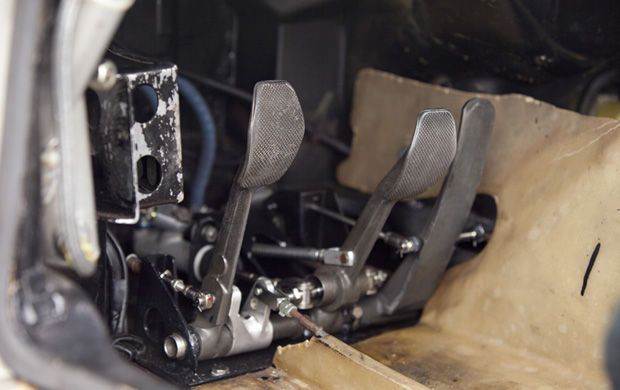
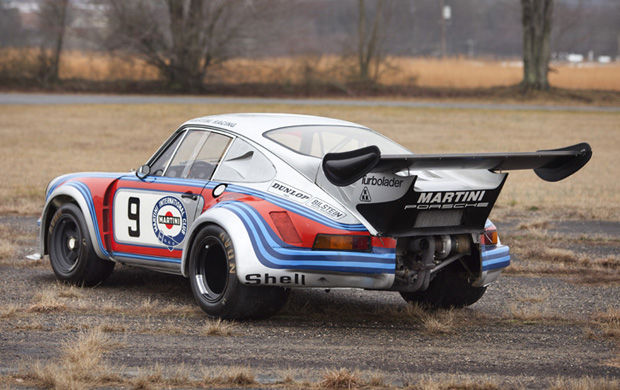
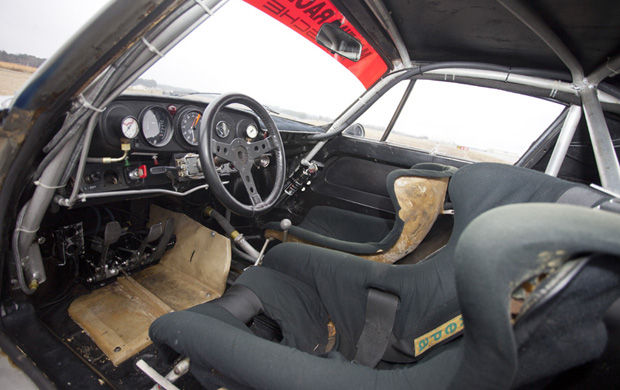

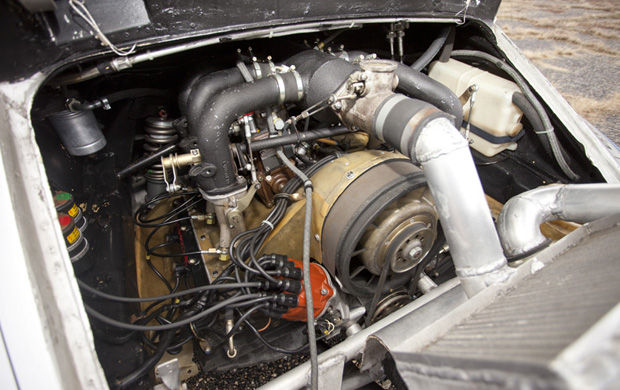
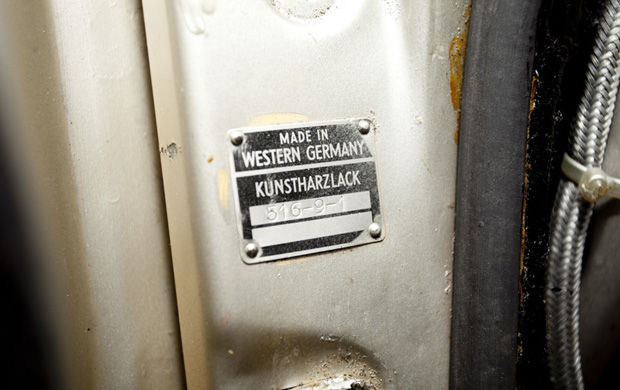
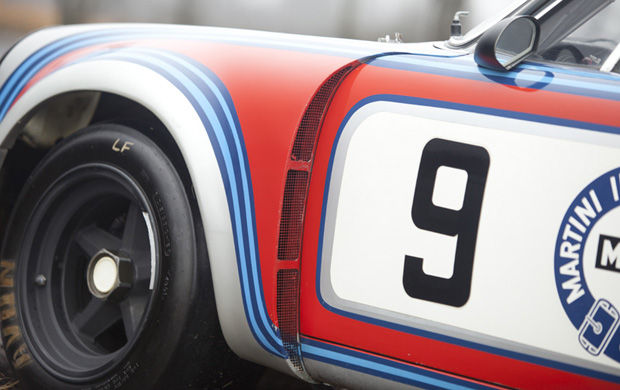

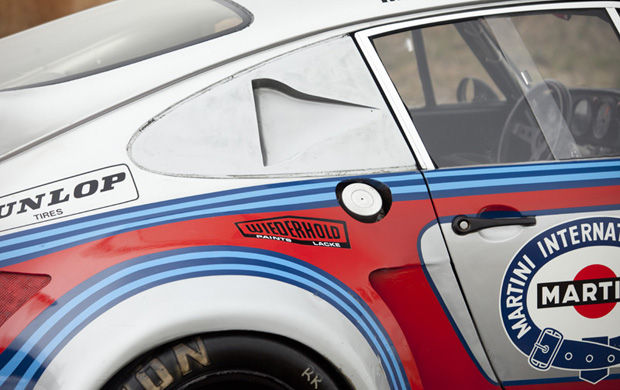

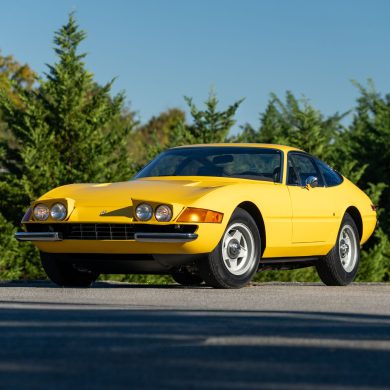
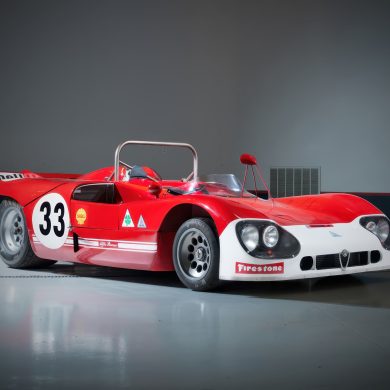
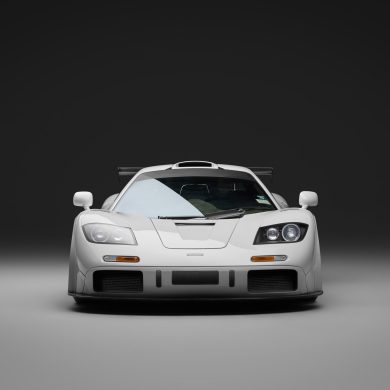
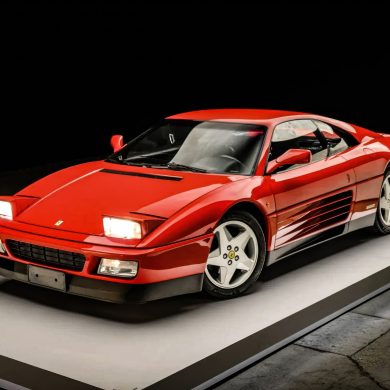
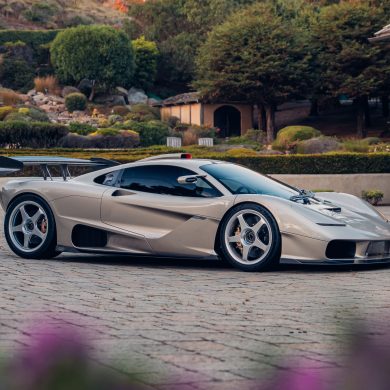
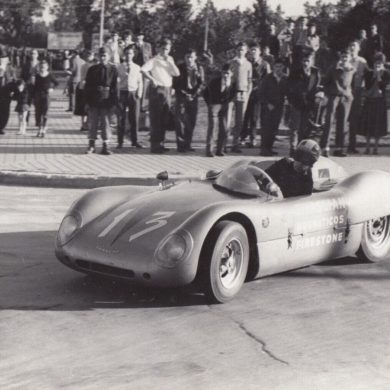


The “Chassis plate” is the paint code tag [ 516-9-1 left inside on the A pillar ]. This RSR was built by the factory wearing Saraha Biege.